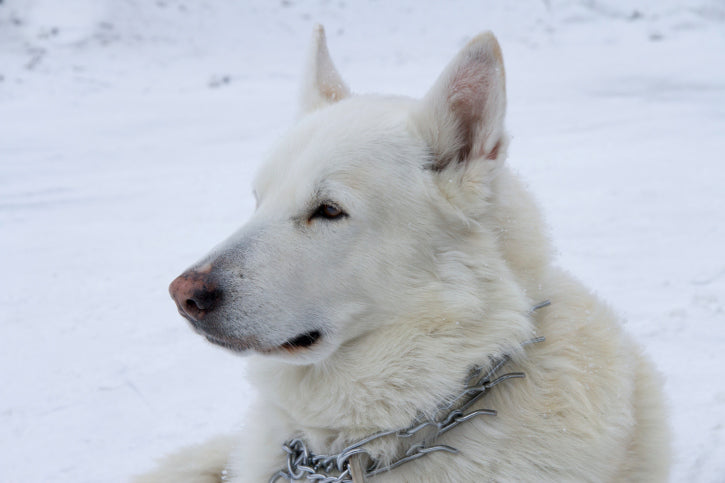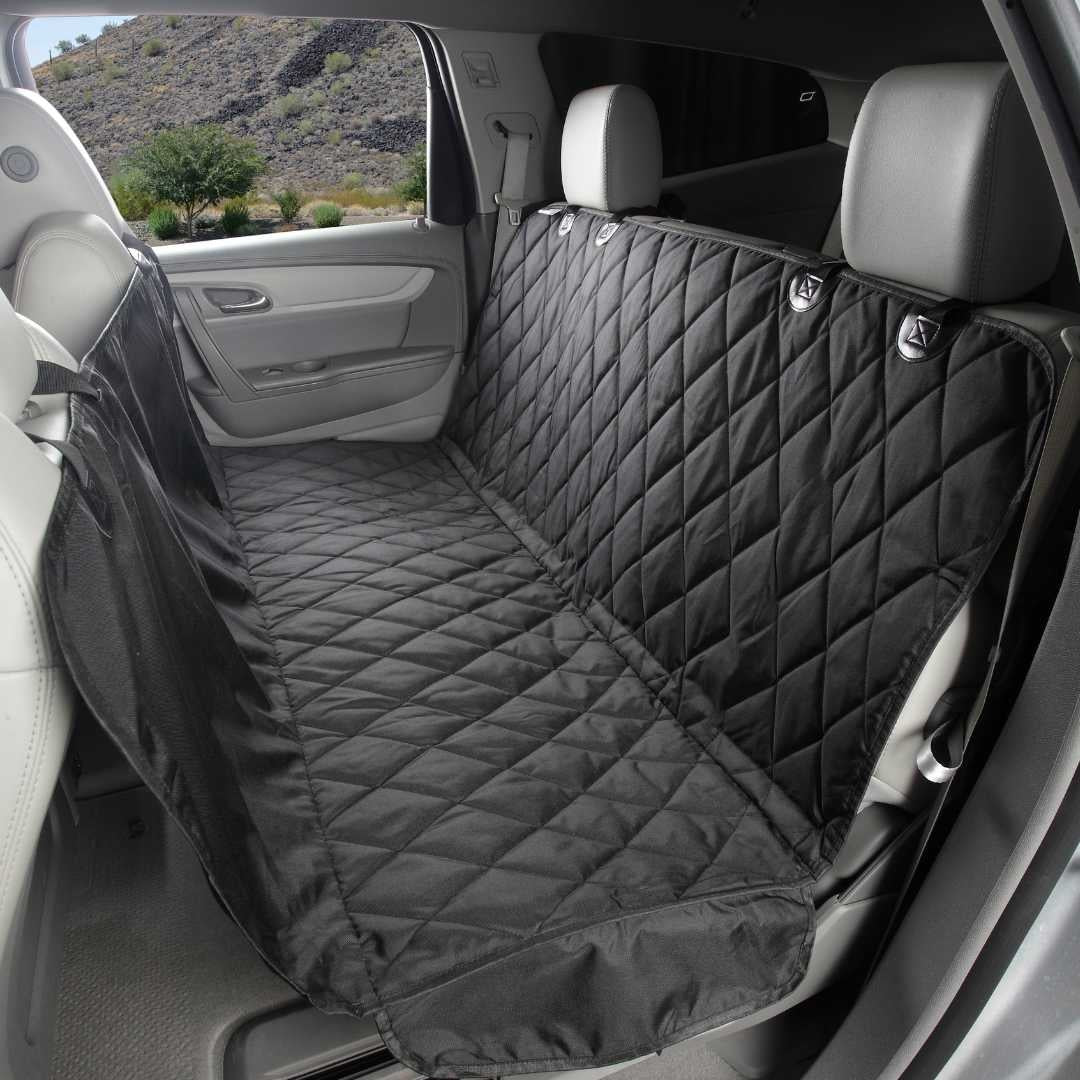“Do you…WANT TO GO FOR A WALKIES?” Those can be a dogs favorite words along with, “Do you… WANT TO EAT?”
Sadly, for some dogs the walk experience is fraught with frustration, confusion and outright pain. For some dog owners the walk experience may be fraught with similar feelings of frustration and anxiety as they struggle to have a pleasant walk with their dog that has not been educated about how to walk in a relaxed manner with their person. For other dog owners they may think they have pulling behavior under control by using outdated dominance/punishment training methods.
People using these methods can be unaware or unconcerned about the many negative and miserable consequences. These methods and the people using them are HUGELY underestimating the intelligence, emotional sophistication and learning capacity of dogs.
The choke chain was designed as a corrective “teaching” method involving a leash pop or snap. When popped or snapped, those actions tighten the chain around the dog’s neck restricting airflow, hence the name choke chain.
Prong collars consist of a series of chain links with blunted open ends pointed inwards towards the dogs’ neck. This causes discomfort or pain to the dog and the idea is to prevent pulling or other unwanted behaviors, by the application of pressure at each point end against the dogs’ neck.
The idea behind both of these methods is if the dog wants the discomfort or pain to go away, then they should stop pulling or doing whatever behavior, they were doing around the same time the collar tightened. This does not sound like a pleasant experience for the helpless dog!
Choke chains have a real potential to seriously injure or even kill dogs. The physical risks are as follows:
- Injured ocular vessels
- Tracheal and esophageal damage
- Severely sprained necks
- Cases of fainting
- Transient foreleg paralysis
- Recurrent laryngeal nerve paralysis
- Hind leg ataxia
- Misalignment of cervical vertebrae
- Horner’s syndrome
- Death by strangulation due to locking of links
Prong collars are uncomfortable for the dog at best or painful at worst and have the potential to puncture a dog’s neck and yes, there are factually supported and documented incidents of this, as well as, the same or similar physical consequences caused by choke chain collars.
Along with the physical risks these methods risk consequences behaviorally, psychologically and emotionally for the dog. When a dog has not been taught other behaviors to choose rather than the unwanted behaviors, nothing can change and the situation will continue to deteriorate. There is also the risk the dog will associate the pain, fear and stress of the tightening collar with whatever he is seeing in his environment, as his mind is struggling to figure what is causing YOU to behave this way. This can lead to negative feelings towards the mistakenly identified cause, often times being people, other dogs or the person at the end of the leash. Since this method lacks the concept of re-educating the dog, people generally find that as undesired behaviors continue over the years they have to escalate the amount of force used against the dog because the dog learns to endure it or the behaviors themselves escalate.
Another problem with these tools and methods is that when you pop the leash and the dog responds by stopping his/her behavior, what is happening is the dog is temporarily suppressing that behavior, not learning, but suppressing in an attempt to protect itself. This creates a situation where the person is dependant on the collar and force to “control” behavior. I suggest rather than “control” your dog “teach” your dog. I would also like to believe that most people do not want a relationship with their dog based on all this intimidation and fear.
Unfortunately, these tools/weapons are sold for anyone to buy and use, and there still exists trainers and training schools that use and teach these methods. What I often see around town are dogs in prong or choke collars being moved along with continual tension on the leash, what a great outing that must be for the dog. I also commonly see people who have become “compulsive yankers.” The dog turns its head to look at another dog “YANK”. The dog shifts its position “YANK”, the dog moves forward to investigate something “YANK”. These people have no clue of the miserable life they are creating for their dog.
So, the place to begin stopping the slide down this slippery slope is to change to non-punishing equipment. Using the right tools for the job makes all the difference.
Head halters generally reduce pulling and do require people to educate themselves and develop the skills to humanely and safely use with your dog.
Dogs generally react negatively to having something across their muzzle and will dive bomb the grass or rub your leg with their muzzle to try to rub it off. They do require an adjustment period and you may need to desensitize your dog to it. Giving lots of positive reinforcement in the form of treats and distracting activities while gradually extending the time wearing it can speed the adaption process.
The halter is not a muzzle so it allows dogs to pant, drink and catch a ball. They work well to control lunging and pulling. For the dogs safety they must never, be used with an extendable leash to avoid having the dog “HIT” the end of the leash potentially causing neck injury.
There are many types and brands. The Gentle Leader and Halti Head Collar are two commonly found in stores. I prefer ones that have an extra strap and clip, to attach to the collar so you are still connected to your dog if they should get out of it.
Another option and preferred method is a front clip harness.
The harness fits around the dog’s body with the leash clip ring at the front of the chest. The dogs feel the harness against their body as a gentle pressure that can be a calming sensation for some dogs and can enhance their ability to sense and follow the leash. Correct sizing and fit is essential for good results, getting them on and off is easy and for most dogs, there is little to no adjustment period. If the dog attempts to lunge or pull the design of the harness, helps redirect the dogs’ body and turns it to the side. Some brand names are sense-ation, sensi-ible and Freedom harness.
The harness and head halter are humane tools to help manage problem behavior and reduce risk of injury, while working on teaching your dog new behaviors. The ultimate goal is to change the dog’s opinion and resulting response to things in its environment or to teach the dog to walk calmly with you.
Using these tools in combination with positive non-harming training methods, is a mutually pleasant way to re-educate your dog and yourself, with the consequence of enhancing the bond between you and your dog. Your dog will learn to look to you for support and direction when confronted with a challenging situation. Because you now have a dog that loves and trusts you and you have taken the time to teach your dog he/she will be better able to make good choices in how to respond, with no fear or intimidation needed.

 Lauren Ranghelli, KPA CTP
Lauren Ranghelli, KPA CTP
Lauren Ranghelli is a Karen Pryor Academy Certified Training Partner with a passion for helping dogs and their people enjoy easier lives together through positive, science-based behavior modification. That sounds a little stuffy, but it’s actually quite an exciting process, and Lauren’s favorite part is making it fun for both human and canine clients.
Learn more about Lauren, her professional credentials, and her training approach here: http://www.andiamodog.com/about-adiamo-dog-training.html




 Lauren Ranghelli, KPA CTP
Lauren Ranghelli, KPA CTP



